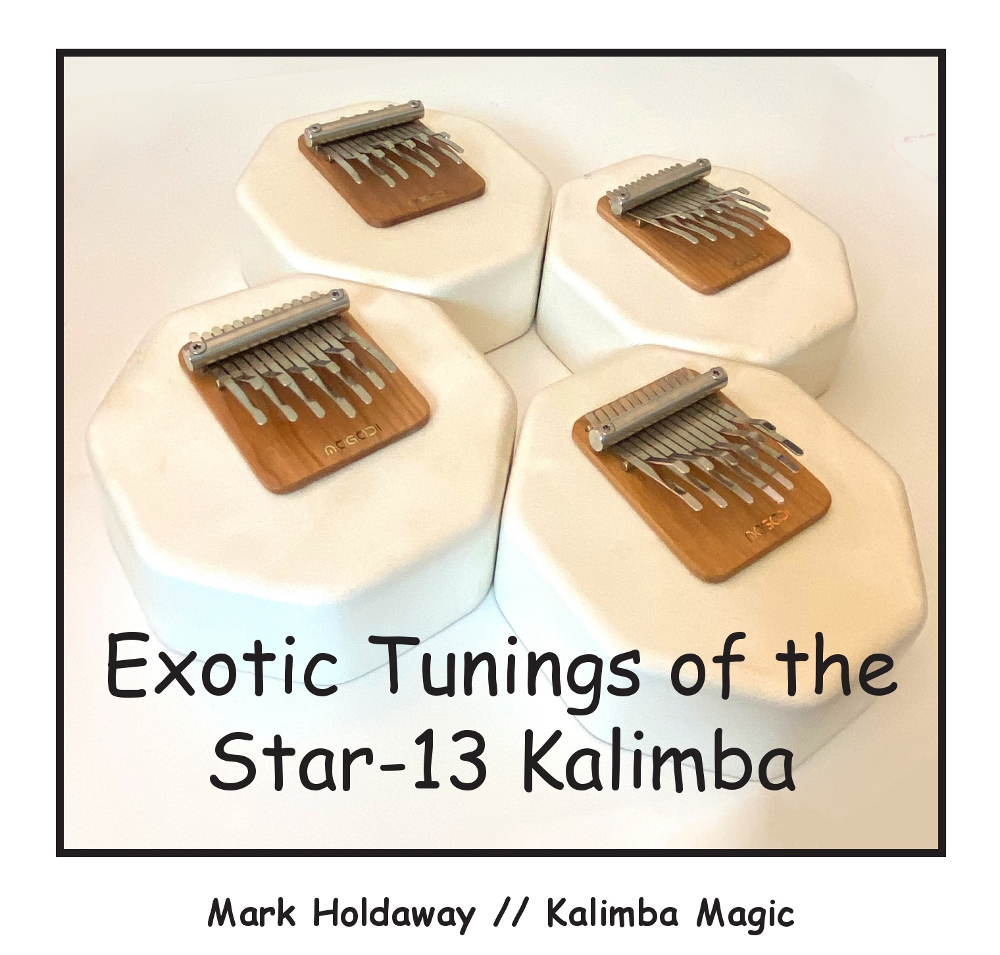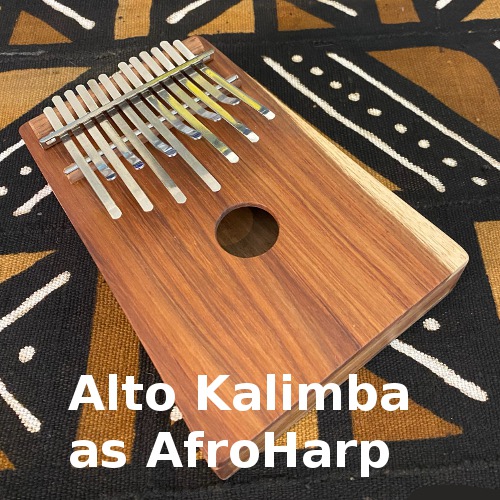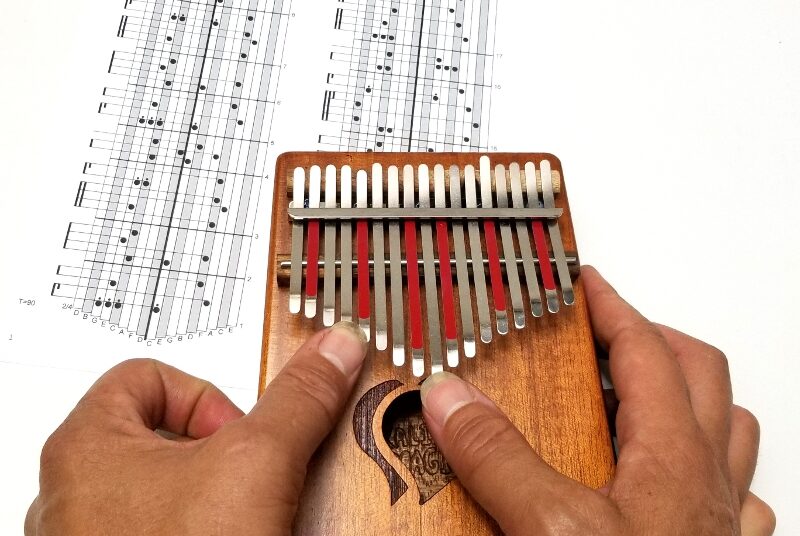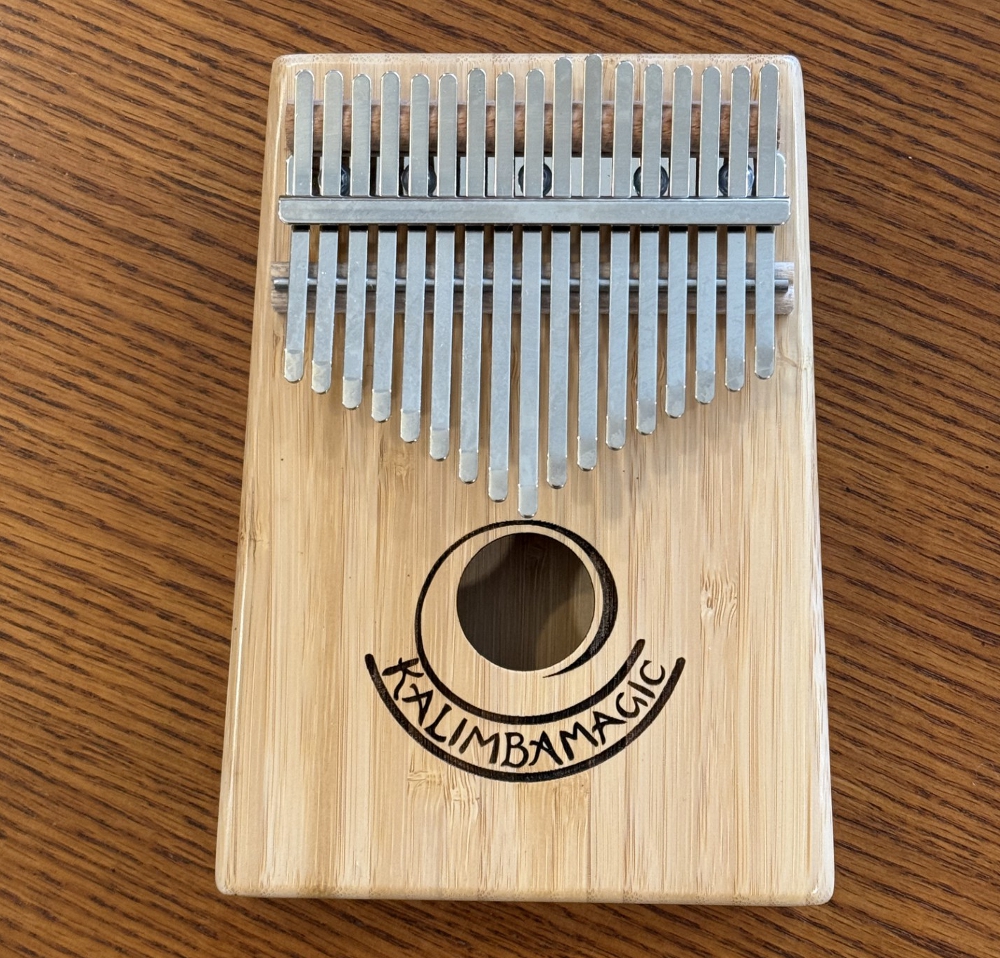
Use of this website constitutes acceptance of the Privacy Policy and User Agreement. Copyright © 2020 Kalimba Magic. All Rights Reserved.
One of the key things about Kalimba Magic that makes it unique is the diversity of instrument brands, models, tunings, and setups. It turns out there are only 40 different basic models of kalimba in our inventory, but that number is multiplied hugely by the different ways we change the kalimbas.
 Why do we change them? Each different tuning plays different music, and each has a different feeling. Sometimes I’m the one who discovers the cool tuning. Sometimes it is a customer or another kalimba player. Sometimes the customer asks if I have anything in G minor, and then I go and invent a specific G minor tuning for some specific kalimba. (Face it – there are dozens of different G minor tunings for any given kalimba – so selecting the “best” one is something of an art form.) It is the journey I have been on for the last 23 years, ever since I made my first Middle Eastern style kalimba tuning.
Why do we change them? Each different tuning plays different music, and each has a different feeling. Sometimes I’m the one who discovers the cool tuning. Sometimes it is a customer or another kalimba player. Sometimes the customer asks if I have anything in G minor, and then I go and invent a specific G minor tuning for some specific kalimba. (Face it – there are dozens of different G minor tunings for any given kalimba – so selecting the “best” one is something of an art form.) It is the journey I have been on for the last 23 years, ever since I made my first Middle Eastern style kalimba tuning.
But this diversity of kalimba styles and tunings is a double edge sword. Yes, different kalimbas are cool, and some people catch the same bug as I have, and they go and get a dozen (or more) kalimbas in different tunings. But Kalimba Magic offers so many different types of kalimbas to the world, it may be difficult for the casual customer to make a decision. And they may be lost to the “false diversity” of Amazon, where there are like 100 different types of kalimba all in the same 17-Note standard C layout.
 And on top of the diversity of kalimba tunings and types, you must also consider the instructional materials offered by Kalimba Magic. Most kalimbas are sold by people who don’t play them. We do play them. And to prove that we can play them, we have written some pretty cool kalimba books for a lot of the instruments we sell. We use the books and instructional downloads to sell the instruments. They will help you learn to play the things that we understand about the kalimba.
And on top of the diversity of kalimba tunings and types, you must also consider the instructional materials offered by Kalimba Magic. Most kalimbas are sold by people who don’t play them. We do play them. And to prove that we can play them, we have written some pretty cool kalimba books for a lot of the instruments we sell. We use the books and instructional downloads to sell the instruments. They will help you learn to play the things that we understand about the kalimba.
All of this – the unique setups, the innovative tunings, and the high quality instructional materials – carves out a niche for Kalimba Magic in the increasingly competitive world of kalimba sales.
Even though Kalimba Magic is changing hands, we will maintain the things that make Kalimba Magic unique, rare, and valuable: we will continue with the diversity of kalimbas and books.
While we honor the past, we are also looking to the future. Anthony, who is a very hnads-on kind of guy, has a whole bunch of cool ideas that will be coming out in the future.
Between 2000 and 2004, before Kalimba Magic started, Mark made several kalimbas. If you plotted them on a graph, each kalimba got a bit better than the one before… but he could sort of see where they were going to end up – OK, but not great. Building kalimbas was not Mark’s forte. So instead he retuned existing great kalimbas and wrote books for them.
But Anthony is another guy altogether. Watch this space.

Anthony Ghimenti, Suzy VanDerMolen, Melissa Ghimenti, Su Washington, and Mark Holdaway.


Sign up for our newsletter and free resources with your email address:
We pinky promise not to spam you and to only send good stuff.
 Seek to Infuse Your Musical Moments With Beauty and Magic
Seek to Infuse Your Musical Moments With Beauty and Magic Kalimba Magic – We Give You The Tools You Need to Succeed
Kalimba Magic – We Give You The Tools You Need to Succeed Back in Stock! The Bamboo-17 Kalimba
Back in Stock! The Bamboo-17 KalimbaUse of this website constitutes acceptance of the Privacy Policy and User Agreement. Copyright © 2020 Kalimba Magic. All Rights Reserved.